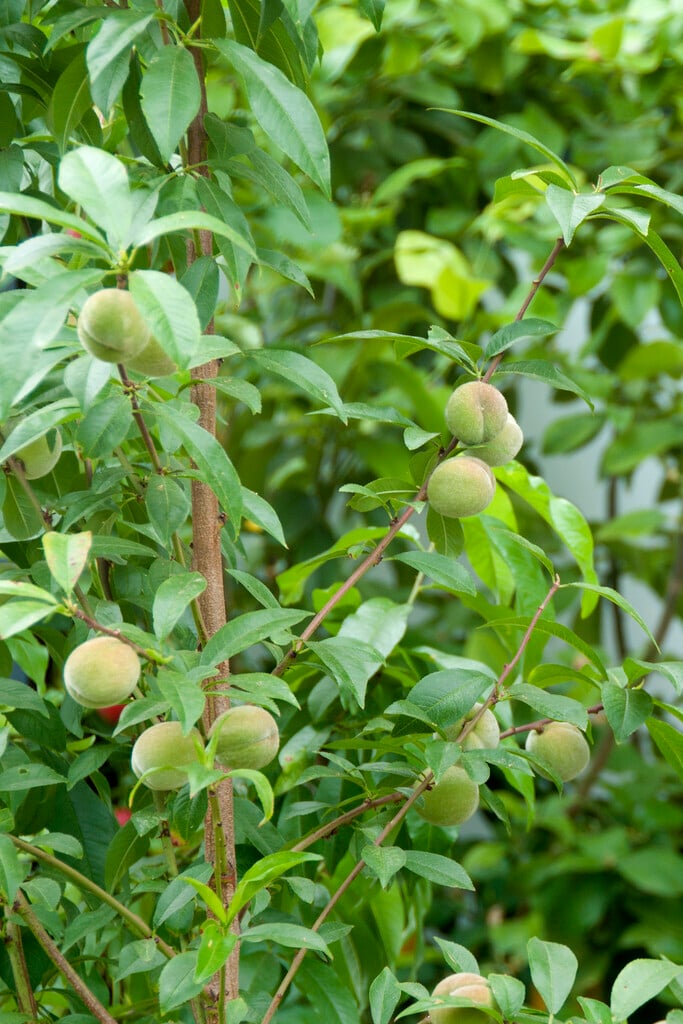Prunus armeniaca
apricot
A small, round-headed tree to 8m with mid-green foliage rounded at the base with a long, pointed tip. White or pink-tinged flowers up to 2cm across appear in early to mid-spring, before the leaves, followed by succulent, edible, red-tinged, yellow-orange fruit. Many cultivated varieties of apricot have been developed from this species.
Size
Ultimate height
4–8 metresTime to ultimate height
10–20 yearsUltimate spread
4–8 metresGrowing conditions
Moisture
Moist but well–drainedpH
Alkaline, NeutralColour & scent
| Stem | Flower | Foliage | Fruit | |
| Spring | Pink White | Green | ||
|---|---|---|---|---|
| Summer | Green | Orange | ||
| Autumn | Green | |||
| Winter |
Position
- Full sun
Aspect
South–facing or West–facing
Exposure
Sheltered Hardiness
H4Botanical details
- Family
- Rosaceae
- Native to GB / Ireland
- No
- Foliage
- Deciduous
- Habit
- Spreading branched
- Potentially harmful
- Seed kernels harmful if eaten, wear gloves and other protective equipment when handling Pets (dogs, rabbits, rodents): Harmful if eaten - for further information and contact numbers regarding pets, see the HTA guide to potentially harmful plantside the kernels of the fruit are harmful if eaten
- Genus
Prunus can be deciduous or evergreen trees or shrubs with showy flowers in spring, and often good autumn foliage colour. Some have edible fruit in autumn, and a few species have ornamental bark
- Name status
Correct
- Plant range
- C Asia
How to grow
Cultivation
Apricots flourish on deep, moisture-retentive, well-drained, ideally slightly alkaline soils and struggle in poor, shallow soils. Although fully hardy, they bloom early, and the flowers are vulnerable to frost, so trees need a warm, sheltered position. Protect blossom from frost at night, and hand pollinate if insects are scarce. See apricot cultivation for further advice
Propagation
Propagate by grafting on rootstock for fruit. Seed-raised plants are likely to be inferior to the parent
Suggested planting locations and garden types
- Cottage and informal garden
- Wildlife gardens
- Edible fruit
- Wall side borders
Pruning
Pruning group 1, ideally in summer to reduce the risk of silver leaf infectionMay be trained as a fan on a warm wall, or as a free-standing bush in milder areas. Train fan-trained trees in spring. Pruning established fans is carried out in early summer and after harvest
Pests
May be susceptible to aphids and caterpillars
Diseases
May be susceptible to peach leaf curl, silver leaf, bacterial canker, blossom wilt and honey fungus. High Risk Host for Xylella fastidiosa
Get involved
The Royal Horticultural Society is the UK’s leading gardening charity. We aim to enrich everyone’s life through plants, and make the UK a greener and more beautiful place.
